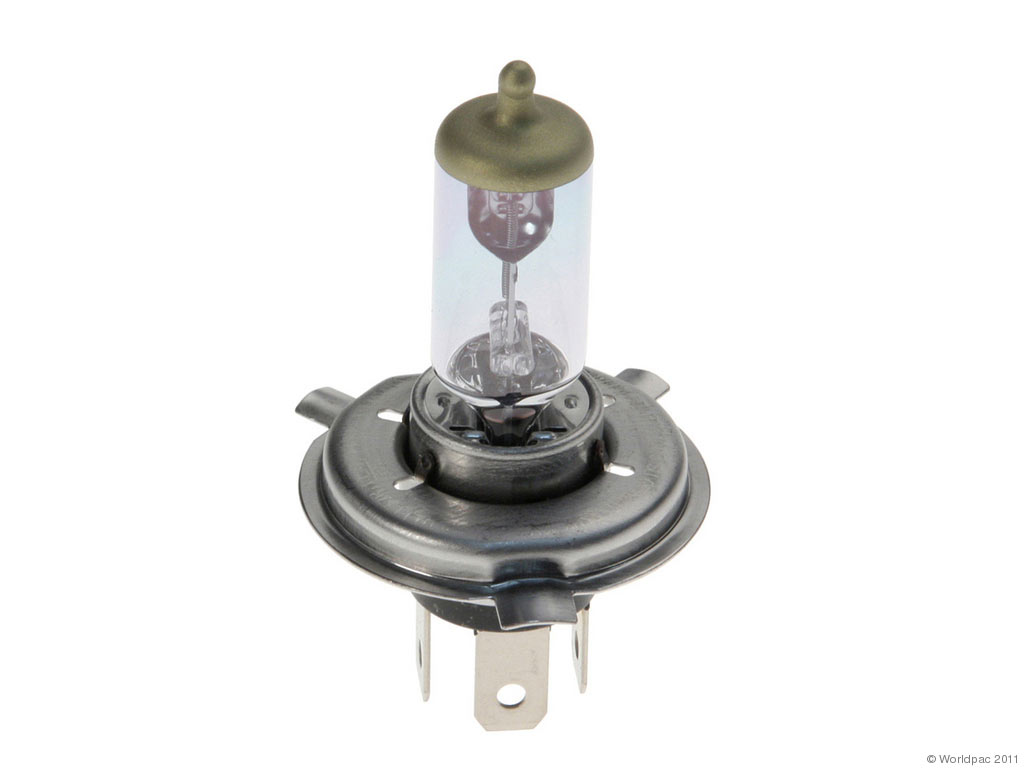I have owned two vehicles that take HB2 bulbs, a 2008 Honda CR-V and a 2009 Honda Ridgeline. The headlamp shape on these two vehicles is very different, but the reflector bowl design has similar elements. I think both CR-V and Ridgeline use housings from NAL (if that's even relevant), and both vehicles have factory-fitted housings.
In both vehicles, I've found that there is definitely a best left/right combination of housing and bulb...a "handedness" if you will. That is, one of the two bulbs produces a crisper cutoff in either the left or right housing than the other, and vice versa. I've never had the left and the right to be perfectly uniform (as the projectors in our MDX are), but putting one of the bulbs in the left housing and the other in the right, observing the results, and then swapping them and observing the results, I can designate one of the bulbs as working best in the left housing and the other as working best in the right housing.
I say all that to ask this: how does the glare cup in the HB2 interact with the shape of the reflector bowl behind it? Not being a lighting engineer, I can only guess, but it seems to me that if you draw a straight line from the filament to either edge of that glare cup, and if you continue that line, it should intersect the reflector bowl at EXACTLY one of the fluted contours. As you look at the lamp from the front, and begin at the center, there is a nearly horizontal contour "edge" that extends from the center to your left (to the vehicle's right), and then also one that extends to your right (the vehicle's left) at a slightly downward angle (estimating 15 deg). This is for right hand traffic rule.
My guess is that all of the reflector bowl ABOVE those two "primary" fluted contours is used on low beam, the entire bowl is used on high beam (with the centered and un-shielded 60W filament), and the interaction between the glare cup and these two "primary" fluted contours is what produces the visible cutoff we see in the beam pattern. Do I have that approximately right? For that interaction to be maintained as perfectly as possible, and for multiple bulbs and housings to produce a uniform cutoff, both the bulb (filament and glare cup) and the housing bowl (fluted contours and the bulb mounting flange) would have to be manufactured to very tight tolerances -- that is probably stating the obvious.
What would/could explain the "handedness" I've observed in various bulb combinations -- why does one bulb seem to prefer one housing vs. the other? Is this more likely due to variations in the bulbs, or is it more likely due to variations in the housings themselves?
I thank you all in advance!
Jason
In both vehicles, I've found that there is definitely a best left/right combination of housing and bulb...a "handedness" if you will. That is, one of the two bulbs produces a crisper cutoff in either the left or right housing than the other, and vice versa. I've never had the left and the right to be perfectly uniform (as the projectors in our MDX are), but putting one of the bulbs in the left housing and the other in the right, observing the results, and then swapping them and observing the results, I can designate one of the bulbs as working best in the left housing and the other as working best in the right housing.
I say all that to ask this: how does the glare cup in the HB2 interact with the shape of the reflector bowl behind it? Not being a lighting engineer, I can only guess, but it seems to me that if you draw a straight line from the filament to either edge of that glare cup, and if you continue that line, it should intersect the reflector bowl at EXACTLY one of the fluted contours. As you look at the lamp from the front, and begin at the center, there is a nearly horizontal contour "edge" that extends from the center to your left (to the vehicle's right), and then also one that extends to your right (the vehicle's left) at a slightly downward angle (estimating 15 deg). This is for right hand traffic rule.
My guess is that all of the reflector bowl ABOVE those two "primary" fluted contours is used on low beam, the entire bowl is used on high beam (with the centered and un-shielded 60W filament), and the interaction between the glare cup and these two "primary" fluted contours is what produces the visible cutoff we see in the beam pattern. Do I have that approximately right? For that interaction to be maintained as perfectly as possible, and for multiple bulbs and housings to produce a uniform cutoff, both the bulb (filament and glare cup) and the housing bowl (fluted contours and the bulb mounting flange) would have to be manufactured to very tight tolerances -- that is probably stating the obvious.
What would/could explain the "handedness" I've observed in various bulb combinations -- why does one bulb seem to prefer one housing vs. the other? Is this more likely due to variations in the bulbs, or is it more likely due to variations in the housings themselves?
I thank you all in advance!
Jason


